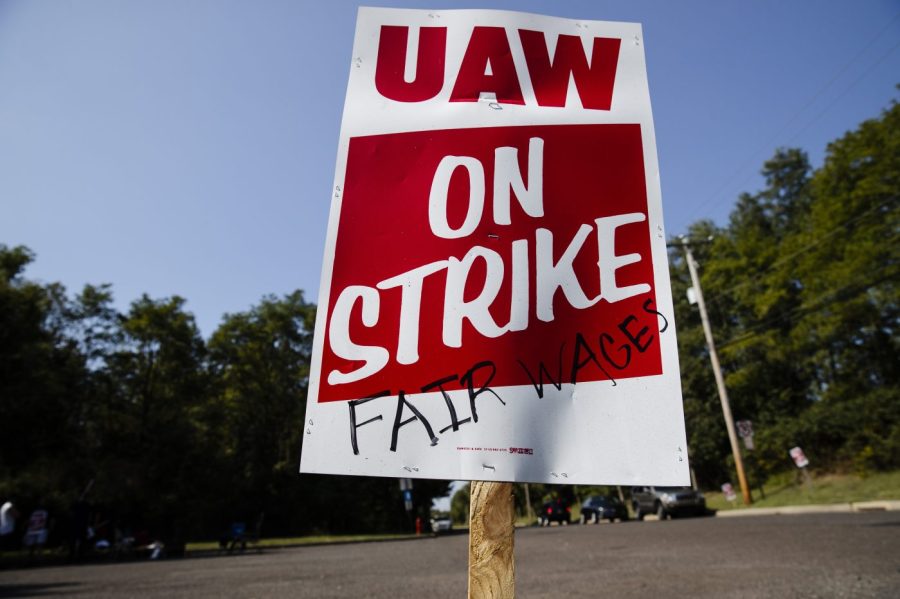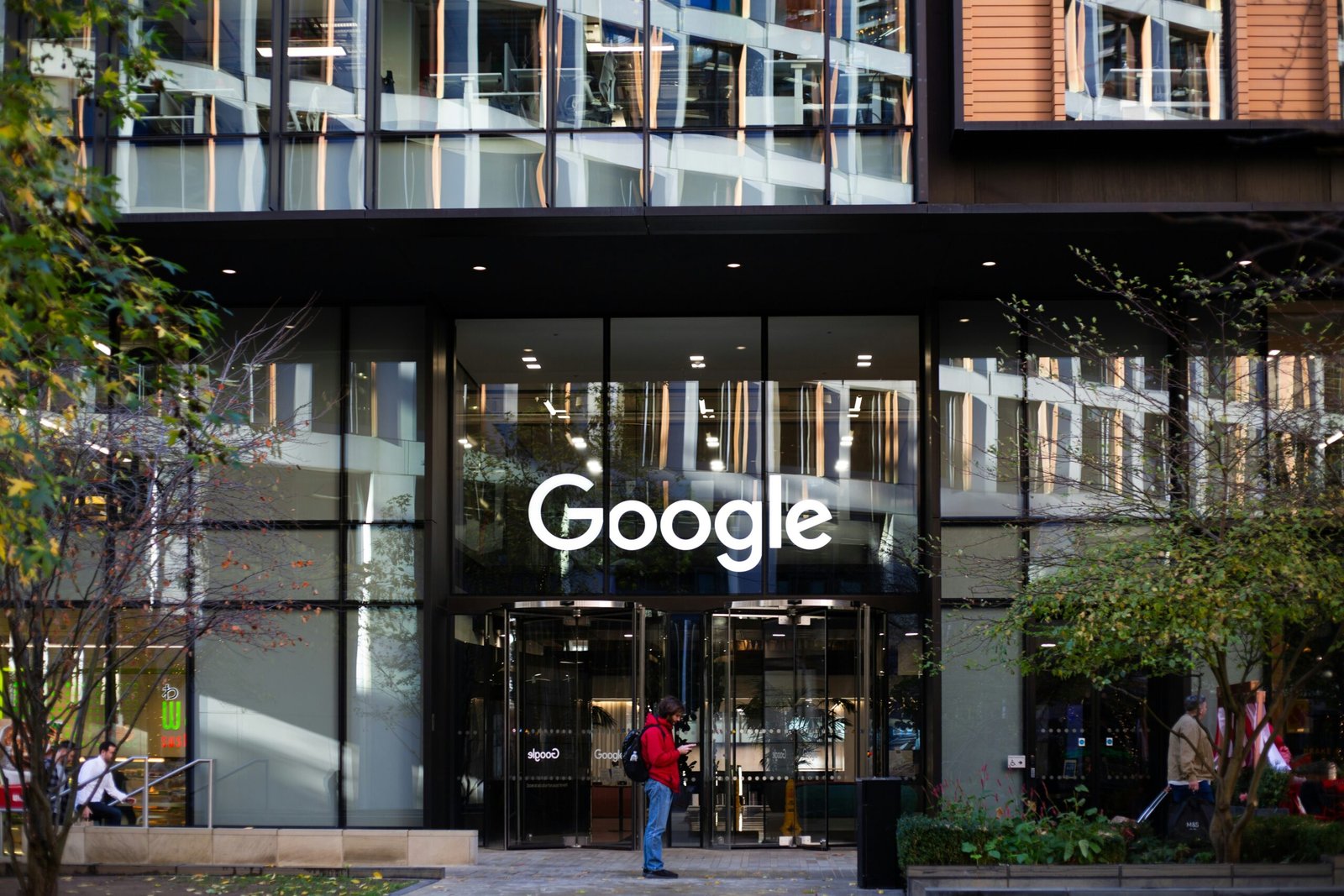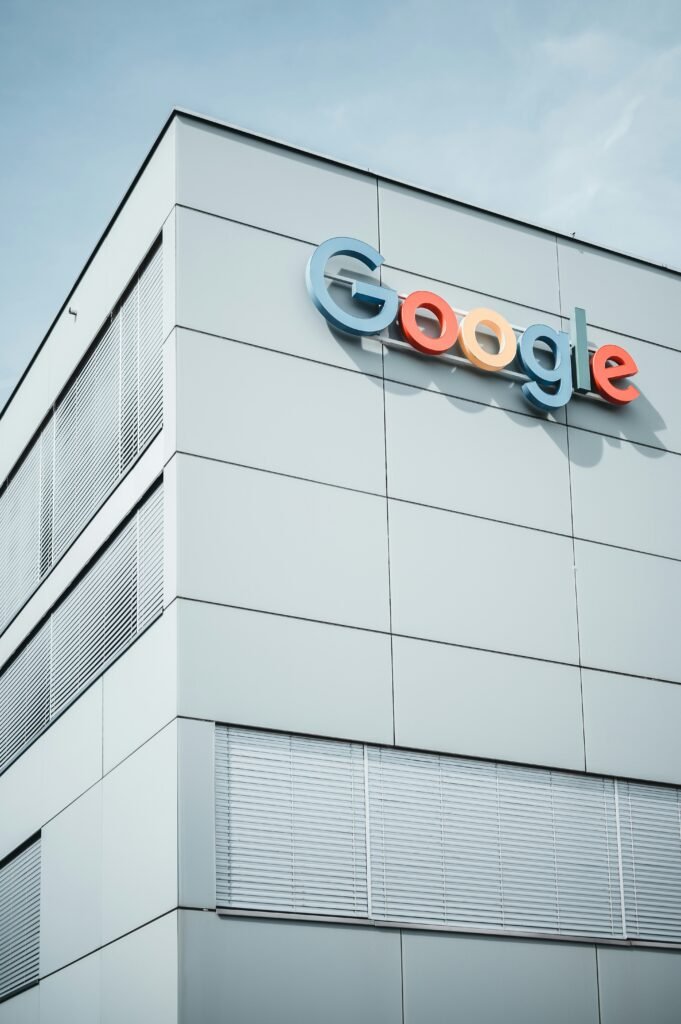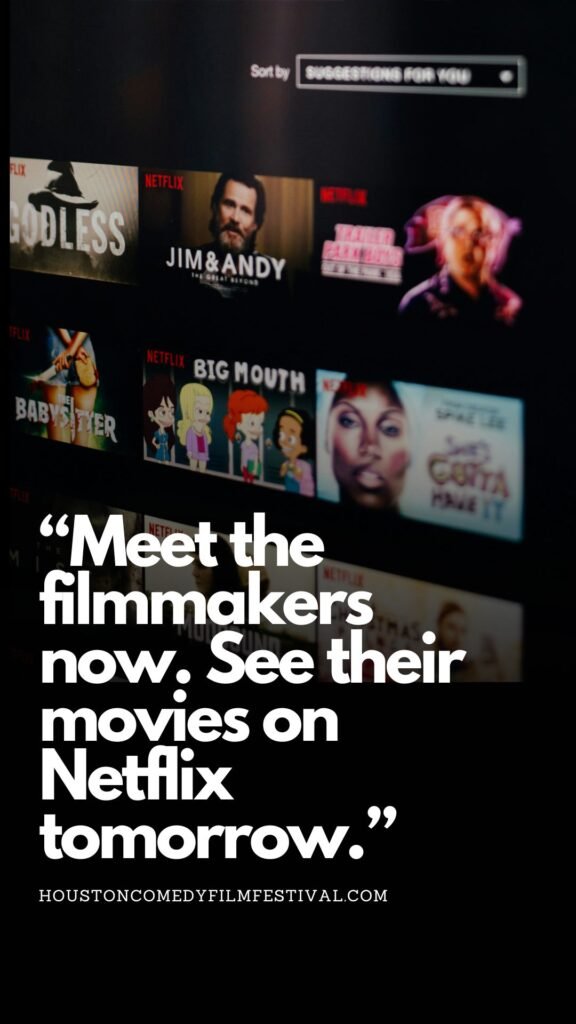Business
5 things to know about a possible UAW strike on August 15, 2023 at 5:29 pm Business News | The Hill

With one month before their contract expires on Sept. 14, President Joe Biden is asking the United Auto Workers union and the Big Three automakers to work together and forge a fair agreement.
Negotiations between UAW and the Big Three — Ford, General Motors and Stellantis — began in early July over pay increases, pensions and career security. Autoworkers are particuarly concerned about how the shift to electric vehicles could threaten their jobs and compensation.
5 big questions about the ‘summer of strikes’
“The need to transition to a clean energy economy should provide a win‑win opportunity for auto companies and unionized workers,” Biden said in a statement released Monday.
“Companies should use this process to make sure they enlist their workers in the next chapter of the industry by offering them good paying jobs and a say in the future of their workplace.”
A fair contract, Biden added, would mean that Big Three auto workers could support their families, sustain their right to organize, and have priority to fill the jobs that the transition to clean energy will create.
Biden meets with UAW president while group withholds 2024 endorsement
“The UAW helped create the American middle class and as we move forward in this transition to new technologies, the UAW deserves a contract that sustains the middle class,” Biden concluded.
Here’s what you need to know about the ongoing negotiations and impending strike:
What are the UAW’s demands?
In this image from video, Shawn Fain, then a candidate for president of the United Auto Workers, is interviewed in Detroit, on Friday, Jan. 13, 2023. (AP Photo/Mike Householder, File)
UAW President Shawn Fain said last week the Big Three are facing “the most audacious and ambitious list of proposals they’ve seen in decades.”
The union is calling to eliminate tiers on wages and benefits, something that was included in the tentative agreement between UPS and the Teamsters. They are also calling for double-digit pay increases, more paid time off and higher retiree pay.
In addition, the union is demanding the reinstatement of some previous policies, including cost of living adjustments (COLA), defined benefit pensions and medical benefits for retirees.
The union is looking to secure their right to strike over plant closures. If a plant does close or the companies leave their towns, UAW is demanding that the companies pay the workers who are left behind to do community service work.
What is the context behind these demands?
People arrive at the Flint Assembly Plant for a free tour and open house, Aug. 11, 2015, in Flint, Mich. (Jake May/The Flint Journal via AP)
Following the release of the Big Three’s quarterly earnings reports in late July, Fain said that the automakers have made a combined $21 billion in profits in the first six months of 2023.
He argued that the companies are subsequently funneling billions into stock buyback schemes to “artificially inflate” the companies shares rather than support their workers or devote that money to the electric vehicle transition.
“Our message going into bargaining is clear,” Fain said. “Record profits mean record contracts.”
He also provided a chart to compare the union’s 2007 contracts to the present, which he used to demonstrate that starting wages have decreased and the number of years it takes to earn the top rate has increased.
He also pointed out that COLA was suspended during the Great Recession in 2009 and though the companies have bounced back, COLA has not been reinstated to adjust paychecks to inflation.
Prior to 2007, Fain added, every member of the Big Three received a pension and retiree healthcare. However, with the two-tiered system, many workers receive either no pension and health care plan or a pension that hasn’t increased since 2003.
“(This) paints a damning picture of what’s happening, not just in our industry, but across the economy,” Fain said. “The rich are getting richer while the rest of us are getting left behind.
“When I was elected, I said, “The UAW is back in the fight,’ and that’s what the Big Three are going to see when we head into bargaining,” Fain added.
How have the Big Three responded?
The Ford logo is seen on signage at a Ford dealership, Tuesday, July 27, 2021. (AP Photo/Gerry Broome, File)
General Motors (GM) went public right out of the gate with a website dedicated to providing negotiation updates.
They boasted the total compensation and benefits package they provide to their team members in a July 18 release by GM Chair and CEO Mary Barra, including a healthcare plan, a profit-sharing program and career development and training opportunities
“We have a long history of negotiating fair contracts with the UAW that reward our employees and support the long-term success of our business,” Barra said. “Our goal this time will be no different.”
Mike Perez, vice president of GM Labor Relations, also said they have opportunities for every worker in the transition to all-electric.
GM said in a video that since the signing of its 2011 contract with UAW, they have provided $1,000 in profit sharing for every $1 billion GM earns in the North American market. Following the 2022 fiscal year, GM said hourly union-represented employees received up to a $12,750 profit-sharing check.
The rest of the cash flow, they said, goes to upgrading facilities, retooling plants, engineering vehicles, developing technology and building up supply chains, with a small percentage going to shareholders.
In an Aug. 3 response to Fain, GM said they expect to increase wages but don’t agree with all of the demands.
“The breadth and scope of the Presidential Demands, at face value, would threaten our ability to do what’s right for the long-term benefit of the team,” the statement read. “A fair agreement rewards our employees and also enables GM to maintain our momentum now and into the future.”
Ford has also come out with its own response in the form of an op-ed, written by CEO Jim Farley and published in the Detroit Free Press.
Contrary to Fain’s claims, Farley said that UAW-Ford employees have received wage increases and annual inflation bonuses, which have exceeded what they would have been paid with COLA in place.
He added that 80 percent of those employers make the top wage rate of $32 per hour, in response to the proposal to end the tier system and the claim that it takes 8 years to reach the top wage rate.
In a response to the op-ed, vice president of the UAW’s National Ford Department Chuck Browning commended Ford for their handing out profit sharing checks, expanding health care benefits, and giving many part-time workers full-time status. However, he pushed back on wages, saying that workers were still not compensated enough to attain a decent standard of living, job security or retirement “with dignity.”
Stellantis’ senior manager Jodi Tinson said in a statement that the company and UAW have a long history of working together. She added that Stellantis is focused on ensuring its future competitiveness as well as preserving good wages and benefits that recognize workers’ contributions.
In a letter sent to employees and obtained by Reuters, Stellantis North America COO Mark Stewart said he is committed to reaching an agreement based on “economic realism.” Agreeing to UAW’s current demands, he said, could endanger the company’s ability to make decisions surrounding job security in the future.
“This is a losing proposition for all of us,” he wrote.
Stellantis has made proposals to reduce the fixed cost structure of the business in response to government electric vehicle rules, according to Reuters. Fain said this included cuts to healthcare coverage and fewer vacation days for new hires, among other proposals.
Fain criticized Stellanis’ “concessions” in the Facebook Live, throwing them in the trash and calling them a “slap in the face.”
Stewart said that Fain did not fairly represent the negotiations and that “theatrics and personal insults” will not move the two sides any closer to an agreement.
Who will be affected by a strike?
From the start of negotiations, Fain has said that members should be prepared to strike. In the livestream, he reaffirmed that conviction, reminding viewers that the strike fund is healthy and that UAW leadership has a plan for work stoppage.
“Come Sept. 14, if these companies don’t deliver, they’re going to see this plan unfold,” Fain said.
Traditionally, UAW has singled out one automaker to target but a spokesperson told the AP that the union could choose all three.
Evercore ISI analyst Chris McNally told Axios that the chances of a UAW strike are at least 50 percent, so if all 150,000 UAW workers were to strike with a fund of $825 million dedicated to paying workers $500 per week, the union could strike for about 12 weeks.
The 40-day UAW strike in 2019 cost GM $3.6 billion. However, Stewart said in his letter that it’s too soon to determine whether there will be a strike.
“At this very early stage, no one should jump to any conclusions about the outcome of the process,” he said.
What are the political risks for Biden?
While Biden has pledged to be a staunch ally of unions, he is yet to secure UAW’s endorsement for his reelection campaign. The union backed Biden against then-President Trump in 2020, but announced in May it would withhold its endorsement.
Fain insisted the union must see a “just transtion” to EVs as the Biden administration pushes to shift automaking to a greener future.
Business, Economy, inflation, President Joe Biden, unions, United Auto Workers With one month before their contract expires on Sept. 14, President Joe Biden is asking the United Auto Workers union and the Big Three automakers to work together and forge a fair agreement. Negotiations between UAW and the Big Three — Ford, General Motors and Stellantis — began in early July over pay increases, pensions…
Business
Google Accused Of Favoring White, Asian Staff As It Reaches $28 Million Deal That Excludes Black Workers

Google has tentatively agreed to a $28 million settlement in a California class‑action lawsuit alleging that white and Asian employees were routinely paid more and placed on faster career tracks than colleagues from other racial and ethnic backgrounds.
- A Santa Clara County Superior Court judge has granted preliminary approval, calling the deal “fair” and noting that it could cover more than 6,600 current and former Google workers employed in the state between 2018 and 2024.

How The Discrimination Claims Emerged
The lawsuit was brought by former Google employee Ana Cantu, who identifies as Mexican and racially Indigenous and worked in people operations and cloud departments for about seven years. Cantu alleges that despite strong performance, she remained stuck at the same level while white and Asian colleagues doing similar work received higher pay, higher “levels,” and more frequent promotions.
Cantu’s complaint claims that Latino, Indigenous, Native American, Native Hawaiian, Pacific Islander, and Alaska Native employees were systematically underpaid compared with white and Asian coworkers performing substantially similar roles. The suit also says employees who raised concerns about pay and leveling saw raises and promotions withheld, reinforcing what plaintiffs describe as a two‑tiered system inside the company.
Why Black Employees Were Left Out
Cantu’s legal team ultimately agreed to narrow the class to employees whose race and ethnicity were “most closely aligned” with hers, a condition that cleared the path to the current settlement.

The judge noted that Black employees were explicitly excluded from the settlement class after negotiations, meaning they will not share in the $28 million payout even though they were named in earlier versions of the case. Separate litigation on behalf of Black Google employees alleging racial bias in pay and promotions remains pending, leaving their claims to be resolved in a different forum.
What The Settlement Provides
Of the $28 million total, about $20.4 million is expected to be distributed to eligible class members after legal fees and penalties are deducted. Eligible workers include those in California who self‑identified as Hispanic, Latinx, Indigenous, Native American, American Indian, Native Hawaiian, Pacific Islander, and/or Alaska Native during the covered period.
Beyond cash payments, Google has also agreed to take steps aimed at addressing the alleged disparities, including reviewing pay and leveling practices for racial and ethnic gaps. The settlement still needs final court approval at a hearing scheduled for later this year, and affected employees will have a chance to opt out or object before any money is distributed.
H2: Google’s Response And The Broader Stakes
A Google spokesperson has said the company disputes the allegations but chose to settle in order to move forward, while reiterating its public commitment to fair pay, hiring, and advancement for all employees. The company has emphasized ongoing internal audits and equity initiatives, though plaintiffs argue those efforts did not prevent or correct the disparities outlined in the lawsuit.
For many observers, the exclusion of Black workers from the settlement highlights the legal and strategic complexities of class‑action discrimination cases, especially in large, diverse workplaces. The outcome of the remaining lawsuit brought on behalf of Black employees, alongside this $28 million deal, will help define how one of the world’s most powerful tech companies is held accountable for alleged racial inequities in pay and promotion.
Business
Luana Lopes Lara: How a 29‑Year‑Old Became the Youngest Self‑Made Woman Billionaire

At just 29, Luana Lopes Lara has taken a title that usually belongs to pop stars and consumer‑app founders.
Multiple business outlets now recognize her as the world’s youngest self‑made woman billionaire, after her company Kalshi hit an 11 billion dollar valuation in a new funding round.
That round, a 1 billion dollar Series E led by Paradigm with Sequoia Capital, Andreessen Horowitz, CapitalG and others participating, instantly pushed both co‑founders into the three‑comma club. Estimates place Luana’s personal stake at roughly 12 percent of Kalshi, valuing her net worth at about 1.3 billion dollars—wealth tied directly to equity she helped create rather than inheritance.

Kalshi itself is a big part of why her ascent matters.
Founded in 2019, the New York–based company runs a federally regulated prediction‑market exchange where users trade yes‑or‑no contracts on real‑world events, from inflation reports to elections and sports outcomes.
As of late 2025, the platform has reached around 50 billion dollars in annualized trading volume, a thousand‑fold jump from roughly 300 million the year before, according to figures cited in TechCrunch and other financial press. That hyper‑growth convinced investors that event contracts are more than a niche curiosity, and it is this conviction—expressed in billions of dollars of new capital—that turned Luana’s share of Kalshi into a billion‑dollar fortune almost overnight.
Her path to that point is unusually demanding even by founder standards. Luana grew up in Brazil and trained at the Bolshoi Theater School’s Brazilian campus, where reports say she spent up to 13 hours a day in class and rehearsal, competing for places in a program that accepts fewer than 3 percent of applicants. After a stint dancing professionally in Austria, she pivoted into academics, enrolling at the Massachusetts Institute of Technology to study computer science and mathematics and later completing a master’s in engineering.
During summers she interned at major firms including Bridgewater Associates and Citadel, gaining a front‑row view of how global macro traders constantly bet on future events—but without a simple, regulated way for ordinary people to do the same.

That realization shaped Kalshi’s founding thesis and ultimately her billionaire status. Together with co‑founder Tarek Mansour, whom she met at MIT, Luana spent years persuading lawyers and U.S. regulators that a fully legal event‑trading exchange could exist under commodities law. Reports say more than 60 law firms turned them down before one agreed to help, and the company then spent roughly three years in licensing discussions with the Commodity Futures Trading Commission before gaining approval. The payoff is visible in 2025’s numbers: an 11‑billion‑dollar valuation, a 1‑billion‑dollar fresh capital injection, and a founder’s stake that makes Luana Lopes Lara not just a compelling story but a data point in how fast wealth can now be created at the intersection of finance, regulation, and software.
Business
Harvard Grads Jobless? How AI & Ghost Jobs Broke Hiring

America’s job market is facing an unprecedented crisis—and nowhere is this more painfully obvious than at Harvard, the world’s gold standard for elite education. A stunning 25% of Harvard’s MBA class of 2025 remains unemployed months after graduation, the highest rate recorded in university history. The Ivy League dream has become a harsh wakeup call, and it’s sending shockwaves across the professional landscape.

Jobless at the Top: Why Graduates Can’t Find Work
For decades, a Harvard diploma was considered a golden ticket. Now, graduates send out hundreds of résumés, often from their parents’ homes, only to get ghosted or auto-rejected by machines. Only 30% of all 2025 graduates nationally have found full-time work in their field, and nearly half feel unprepared for the workforce. “Go to college, get a good job“—that promise is slipping away, even for the smartest and most driven.
Tech’s Iron Grip: ATS and AI Gatekeepers
Applicant tracking systems (ATS) and AI algorithms have become ruthless gatekeepers. If a résumé doesn’t perfectly match the keywords or formatting demanded by the bots, it never reaches human eyes. The age of human connection is gone—now, you’re just a data point to be sorted and discarded.
AI screening has gone beyond basic qualifications. New tools “read” for inferred personality and tone, rejecting candidates for reasons they never see. Worse, up to half of online job listings may be fake—created simply to collect résumés, pad company metrics, or fulfill compliance without ever intending to fill the role.
The Experience Trap: Entry-Level Jobs Require Years
It’s not just Harvard grads who are hurting. Entry-level roles demand years of experience, unpaid internships, and portfolios that resemble a seasoned professional, not a fresh graduate. A bachelor’s degree, once the key to entry, is now just the price of admission. Overqualified candidates compete for underpaid jobs, often just to survive.
One Harvard MBA described applying to 1,000 jobs with no results. Companies, inundated by applications, are now so selective that only those who precisely “game the system” have a shot. This has fundamentally flipped the hiring pyramid: enormous demand for experience, shrinking chances for new entrants, and a brutal gauntlet for anyone not perfectly groomed by internships and coaching.
Burnout Before Day One
The cost is more than financial—mental health and optimism are collapsing among the newest generation of workers. Many come out of elite programs and immediately end up in jobs that don’t require degrees, or take positions far below their qualifications just to pay the bills. There’s a sense of burnout before careers even begin, trapping talent in a cycle of exhaustion, frustration, and disillusionment.
Cultural Collapse: From Relationships to Algorithms
What’s really broken? The culture of hiring itself. Companies have traded trust, mentorship, and relationships for metrics, optimizations, and cost-cutting. Managers no longer hire on potential—they rely on machines, rankings, and personality tests that filter out individuality and reward those who play the algorithmic game best.
AI has automated the very entry-level work that used to build careers—research, drafting, and analysis—and erased the first rung of the professional ladder for thousands of new graduates. The result is a workforce filled with people who know how to pass tests, not necessarily solve problems or drive innovation.
The Ghost Job Phenomenon
Up to half of all listings for entry-level jobs may be “ghost jobs”—positions posted online for optics, compliance, or future needs, but never intended for real hiring. This means millions of job seekers spend hours on applications destined for digital purgatory, further fueling exhaustion and cynicism.
Not Lazy—Just Locked Out
Despite the headlines, the new class of unemployed graduates is not lazy or entitled—they are overqualified, underleveraged, and battered by a broken process. Harvard’s brand means less to AI and ATS systems than the right keyword or résumé format. Human judgment has been sidelined; individuality is filtered out.

What’s Next? Back to Human Connection
Unless companies rediscover the value of human potential, mentorship, and relationships, the job search will remain a brutal numbers game—one that even the “best and brightest” struggle to win. The current system doesn’t just hurt workers—it holds companies back from hiring bold, creative talent who don’t fit perfect digital boxes.
Key Facts:
- 25% of Harvard MBAs unemployed, highest on record
- Only 30% of 2025 grads nationwide have jobs in their field
- Nearly half of grads feel unprepared for real work
- Up to 50% of entry-level listings are “ghost jobs”
- AI and ATS have replaced human judgment at most companies
If you’ve felt this struggle—or see it happening around you—share your story in the comments. And make sure to subscribe for more deep dives on the reality of today’s economy and job market.
This is not just a Harvard problem. It’s a sign that America’s job engine is running on empty, and it’s time to reboot—before another generation is locked out.

 Entertainment4 weeks ago
Entertainment4 weeks agoColombia’s ‘Doll’ Arrest: Police Say a 23-Year-Old Orchestrated Hits, Including Her Ex’s Murder

 Entertainment4 weeks ago
Entertainment4 weeks agoHow The Grinch Became The Richest Christmas Movie Ever

 Entertainment4 weeks ago
Entertainment4 weeks agoMiley Cyrus Is Engaged to Maxx Morando

 Business4 weeks ago
Business4 weeks agoLuana Lopes Lara: How a 29‑Year‑Old Became the Youngest Self‑Made Woman Billionaire

 Film Industry3 weeks ago
Film Industry3 weeks agoDisney Brings Beloved Characters to ChatGPT After $1 Billion OpenAI Deal

 Entertainment4 weeks ago
Entertainment4 weeks agoMariah Carey’s One Holiday Hit Pays her $3.3 Million a Year

 Film Industry3 weeks ago
Film Industry3 weeks agoNetflix Got Outbid: Paramount Drops a $108 Billion Cash Bomb on Warner Bros.

 Entertainment4 weeks ago
Entertainment4 weeks agoAnne Hathaway Just Turned Her Instagram Bio Into a 2026 Release Calendar





























